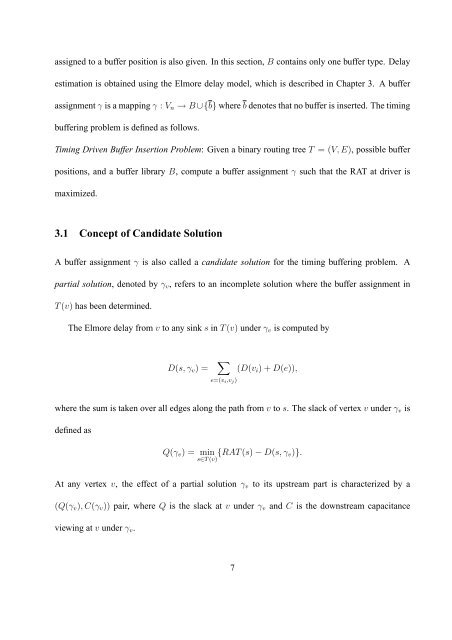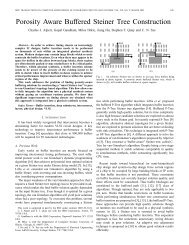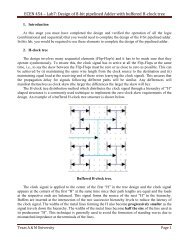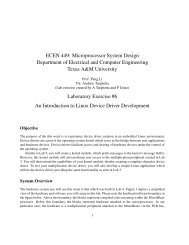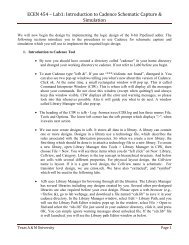Buffer Insertion Basics - Computer Engineering & Systems Group ...
Buffer Insertion Basics - Computer Engineering & Systems Group ...
Buffer Insertion Basics - Computer Engineering & Systems Group ...
Create successful ePaper yourself
Turn your PDF publications into a flip-book with our unique Google optimized e-Paper software.
assigned to a buffer position is also given. In this section, B contains only one buffer type. Delay<br />
estimation is obtained using the Elmore delay model, which is described in Chapter 3. A buffer<br />
assignment γ is a mapping γ : V n → B ∪{b} where b denotes that no buffer is inserted. The timing<br />
buffering problem is defined as follows.<br />
Timing Driven <strong>Buffer</strong> <strong>Insertion</strong> Problem: Given a binary routing tree T = (V,E), possible buffer<br />
positions, and a buffer library B, compute a buffer assignment γ such that the RAT at driver is<br />
maximized.<br />
3.1 Concept of Candidate Solution<br />
A buffer assignment γ is also called a candidate solution for the timing buffering problem. A<br />
partial solution, denoted by γ v , refers to an incomplete solution where the buffer assignment in<br />
T(v) has been determined.<br />
The Elmore delay from v to any sink s in T(v) under γ v is computed by<br />
D(s,γ v ) =<br />
∑<br />
(D(v i ) + D(e)),<br />
e=(v i ,v j )<br />
where the sum is taken over all edges along the path from v to s. The slack of vertex v under γ v is<br />
defined as<br />
Q(γ v ) = min {RAT(s) − D(s,γ v )}.<br />
s∈T(v)<br />
At any vertex v, the effect of a partial solution γ v to its upstream part is characterized by a<br />
(Q(γ v ),C(γ v )) pair, where Q is the slack at v under γ v and C is the downstream capacitance<br />
viewing at v under γ v .<br />
7


